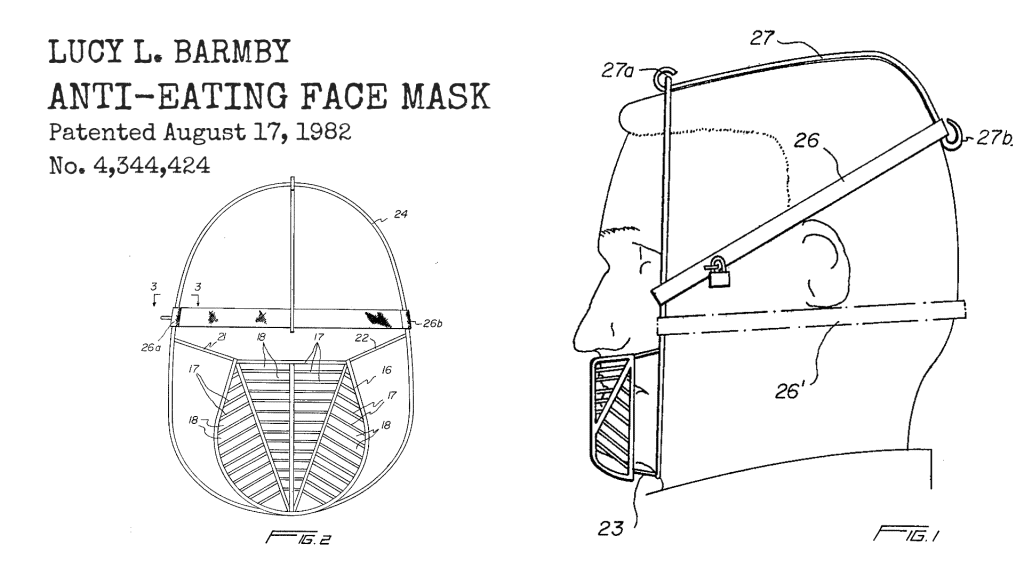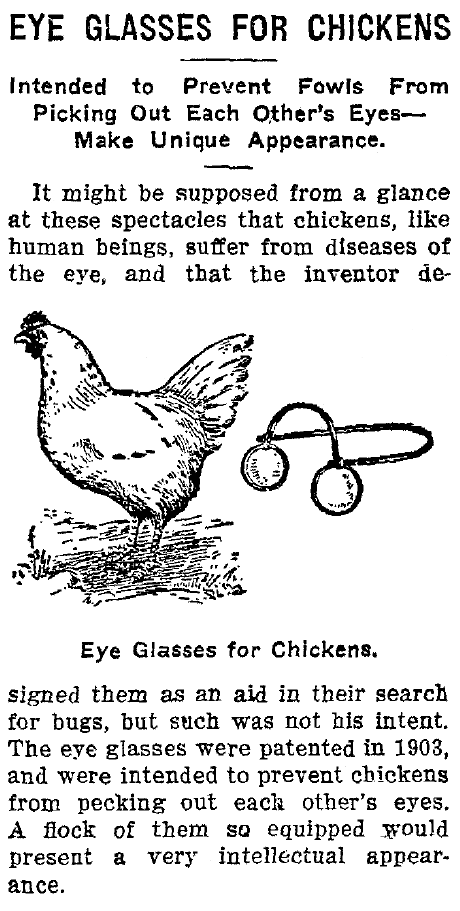Did you know May is National Inventors Month? Neither did we! Now that we know, we want to celebrate by exploring some of the quirky and weird inventions that have come from human innovation.
Let’s honor those inventors who dared to think outside of the box (way outside) and explore some of the weirdest inventions and patents filed throughout history — the kinds of inventions that make you stop and say, “wait, someone actually made that?”
Let’s take a look!
In the early 1900s, people outfitted windows with wire cages that allowed infants and toddlers to get “fresh air.” Yes, it’s exactly what it sounds like — a wire cage outside of a window however many stories high that babies and young children would sit or lay in. You can see for yourself with this old newsreel. Eleanor Roosevelt, yes the Eleanor Roosevelt, is said to have purchased a chicken-wire cage that she hung outside of her New York apartment window with her daughter inside.
Emma Read is credited with inventing this item and applying for a patent on it in 1922.
In the 1960s, Goodyear invented a type of tire that could be dyed different colors. They marketed them at the time as something that could be matched to “the wife’s new outfit.” They went on to add 18 lightbulbs to the tire to create a glowing effect but the fad didn’t take off for a variety of reasons.
In early 1949, Victor T. Hoeflich introduced the radio hat, or the “Man from Mars, Radio Hat.” It was a portable radio built into a pitch helmet. It retailed for $7.95 and was sold across the country for a time, but by early 1950 advertising for the hat stopped. It lost traction fairly quickly over its technical limitations, like losing its signal and making annoying squealing noises. You can read more about it here!
In 1936, Hamblin glasses were designed to let people read while lying in bed. The glasses use mirrors that allow the person wearing them to see at a 45 degree angle. The product never really took off, but versions of them are still available for purchase today — they’re often referred to as “Prism Glasses” or “Lazy Glasses.”

This quirky invention is exactly what the name suggests — a machine built to imitate a cat to frighten away rodents. It was invented by a Japanese company in the 1960s, you can see a newspaper mention of it here from September 19, 1963 which says, “the machine emits mew mew sounds and its eyes have sparkling lights.” Not surprisingly, this invention didn’t take off, either.
A viral trend at the time, in 1975 copywriter Gary Dahl developed the Pet Rock idea after his friends complained about the effort required to care for their pets. He joked that a rock would make the perfect pet because you don’t have to feed it, walk it, or clean up after it. He saw the potential for the novelty items and capitalized on it, selling them with a manual and carrying case.
The idea of a pet rock was so amusing to so many people that in less than a year Dahl became a millionaire. At the time, Newsweek said it was “one of the most ridiculously successful marketing schemes ever.” There was even a song released around the time that made the country charts (yes, seriously) about having a pet rock, you can listen to it here.
You can still buy a version like the original today, but it’s going to cost you around $30.
Patented in 1876 by Virgil A. Gates, the moustache guard was exactly what it sounds like — a device made of rubber or metal that was attached to the face with elastic cords to protect the wearer’s mustache from food or liquid. While it may sound ridiculous to us today, at the time, different versions of these guards or shields were popular, and even included into the design of some cups.
During the 18th and 19th centuries, when determining death was less advanced, there was a real fear of being buried alive. Even George Washington, yes the one you’re thinking of, spoke of his fear of being buried alive in his final words to his secretary; he asked for a three-day delay between his death and his body being buried.
To combat this fear, a series of different inventions were made that included mechanisms like tubes for air and light, signal bells for someone buried alive, and ladders to allow for escape from the coffin.
There were several different iterations of this idea, as far back as 1792 when Duke Ferdinand of Brunswick was buried in a coffin that had a window and breathing tube installed. The earliest patent filed for this type of coffin was in 1843 for a “life-preserving coffin” by Christian H. Eisenbrandt. His version of the device included a spring-loaded lid that would open if the head or hand moved. Since that wouldn’t work underground, he suggested the coffin be left above ground in a vault with a key to the door of the vault left inside, so if the person was alive they could get out.
A patent was filed in 1982 by Lucy L. Barmby for a face mask that was meant to be used to fight unhealthy habits by people exposed to food often like chefs and cooks. It was a device that covered the mouth but still allowed the wearer to breath and talk and was secured with a small padlock. It was meant to help fight overeating and other unhealthy habits, like smoking.
Insert Hannibal Lecter reference here.


Let’s conclude with a truly weird invention — glasses for chickens. In the early 1900s, there were a series of inventions designed to prevent chickens from injuring each other. Chickens, especially confined chickens, can be prone to cannibalism and these glasses were sold as a solution to the problem. They were attached with straps, hooks, or pins, and some versions had red-tinted lenses that were designed to obscure the appearance of blood and reduce the instinct of the chickens to peck each other.
While we’re ending on that macabre note, it’s a fitting close to a journey through human creativity — from the silly to the bizarre, and even the barnyard.
Recommended:
Terms of submitting this form: I agree that Bryan University may contact me regarding educational services via email, telephone, SMS text message, or automated technology at the email address and phone numbers provided. Message and data rates may apply. Message frequency may vary. Text STOP to cancel anytime. This consent is not required to enroll. For questions, call 1 (888) 768 6861. Visit our Privacy Policy.